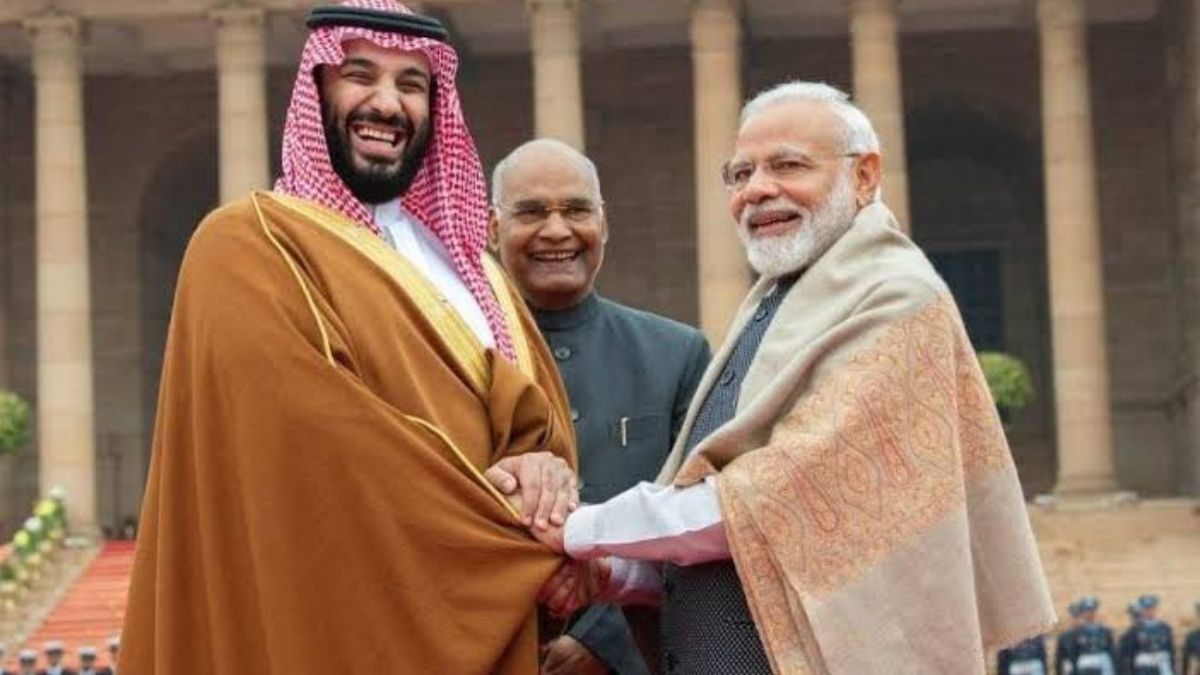Pahalgam brings India closer to the Middle East in fighting religious extremism
 Prime Minister Narendra Modi with Saudi Arabia Crown Prince Mohammed Bin Salman | X
Prime Minister Narendra Modi with Saudi Arabia Crown Prince Mohammed Bin Salman | X
It was the first Friday after the Pahalgam terror attack. Along with a group of students of Jawaharlal Nehru University, we were on a pre-scheduled visit to the mosque in the Jamaat Ulema Hind headquarters in New Delhi. It was a regular visit which we have been doing for over a decade to understand various religious minorities in the Middle East. Believers see Friday Jumma prayers as the most important, and hence it, attracts a large audience. For our group, which mostly included non-Muslim students, it was a learning experience.
Before the mid-day prayers, the imam of the mosque delivers Khutbah (Friday noon sermon). Normally, this has been used to highlight issues, challenges and problems facing the community. When we were in the mosque, the imam focused on kalma, the core Islamic declaration faith. The imam elaborated on the origin, importance and values of kalma and its significance to the faith and the faithful. While essential to the faith, the imam was appalled that kalma was used in Pahalgam to segregate the believers and others and forcefully argued that killing people for not knowing kalma—the centrality of Islam—is the worst thing any Muslim could do. He reminded us—with his mesmerising voice that echoed at the high ceiling—that distinguishing and killing people is disrespectful and a violation of the spirit of Islam. Kalma is a reaffirmation in the unity of God and Prophet Mohammad as his messenger. Using Kalma to identify and kill people, especially when the Quran says that killing one innocent human being is equivalent to a crime against the whole of humanity, is a grave sin.
However, mainstream Indian media was careful to minimise, avoid or gloss over the use of kalma in Pahalgam. Such an admission of separation, they assumed, would create communal tensions across the country, and hence, most media outlets, political commentators and analysts settled for the ‘tourist’ identity of the victims of Pahalgam. Except for one local person, all the 25 victims of Pahalgam were tourists. But that was not their only identity, even though most mainstream media did not go beyond them being ‘tourists’. Wearing blinkers, some even felt that the terrorists ‘conversed with random individuals” among the 1,500 tourists in the vicinity. Unfortunately, the slogan of Truth to power is never to be internalised.
Thus, if one leaves out political correctness, ideological blinkers, selective amnesia and echo chambers, Pahalgam is a defining moment. India is not new to terrorism. Despite the absence of a universal definition, terrorism implies premeditated and indiscriminatory political violence against civilians perpetrated by non-state actors.
Though India witnessed similar savageries in the 26/11 Mumbai attacks, Pahalgam breached a new threshold. Those who carried out the Pahalgam attack were not bothered by political correctness or verbal gymnastics. They were clear in their vision, strategy and execution. They asked the potential victims to recite kalma, the core declaration of the Islamic faith. Those who did were let off, and those who could not were slain.
Religious cleansing at its best and executed effectively. It was a brutal exhibition of religious extremism that was unacceptable to several Islamic societies in the Middle East. Many were quick to condemn the killing and called it ‘heinous’. For decades, several Middle Eastern societies were at the receiving end of religious extremism. Most emanate from the extremist interpretation of Islam. A vast majority of countries, such as Algeria, Egypt, Iraq, Syria and Yemen, were at the receiving end of religious extremism. Though the level of violence is not that severe in Jordan, Saudi Arabia and the UAE, Islamist extremism has become the prime threat to their social cohesion and political stability. Though some might find it difficult to accept, extremism has also undermined Palestinian national unity and cohesion.
Hence, the rulers of these countries quickly recognised the extremist nature of the Pahalgam attack and called out the heinous crime. The nightmarish moment for Saudi Arabia came in November 1979 when a group of religious extremists laid a siege on Kaaba in Mecca. The Kingdom had to introduce considerable reforms and invest politico-diplomatic capital to overcome the negative image that Islam came to be associated with following the 9/11 attacks in the US. Several countries do not tolerate even extremist social media posts by their citizens or expatriate communities. While some might feel differently, such an ‘intolerant attitude towards extremism’ undoubtedly contributed to their political stability and economic progress.
These shared concerns vis-à-vis the religious extremist narrative ironically bring India and the mainstream Middle Eastern countries closer. Through the recent enlisting of sharper minds and orators like Shashi Tharoor, Ghulam Nabi Azad and Asaduddin Owaisi into its diplomatic offensive, the Indian government could bring greater synergy with the Middle East in fighting religious extremism. Yes, Pahalgam also brings some silver linings.
The author teaches contemporary Middle East studies at Jawaharlal Nehru University, New Delhi.
Middle East